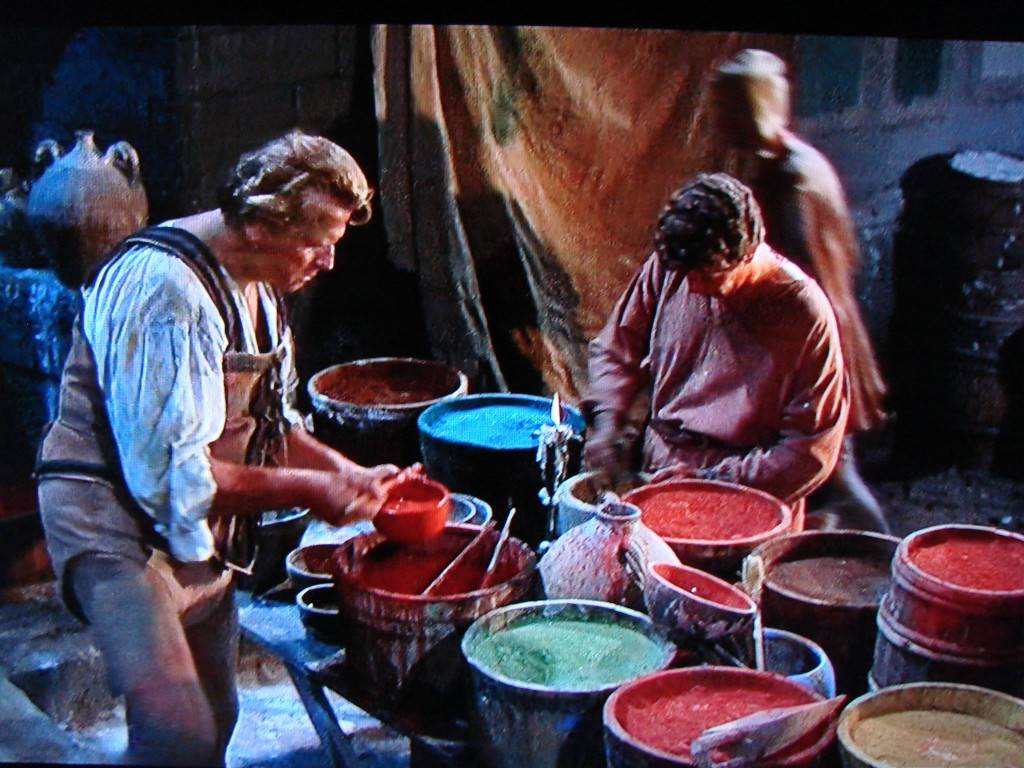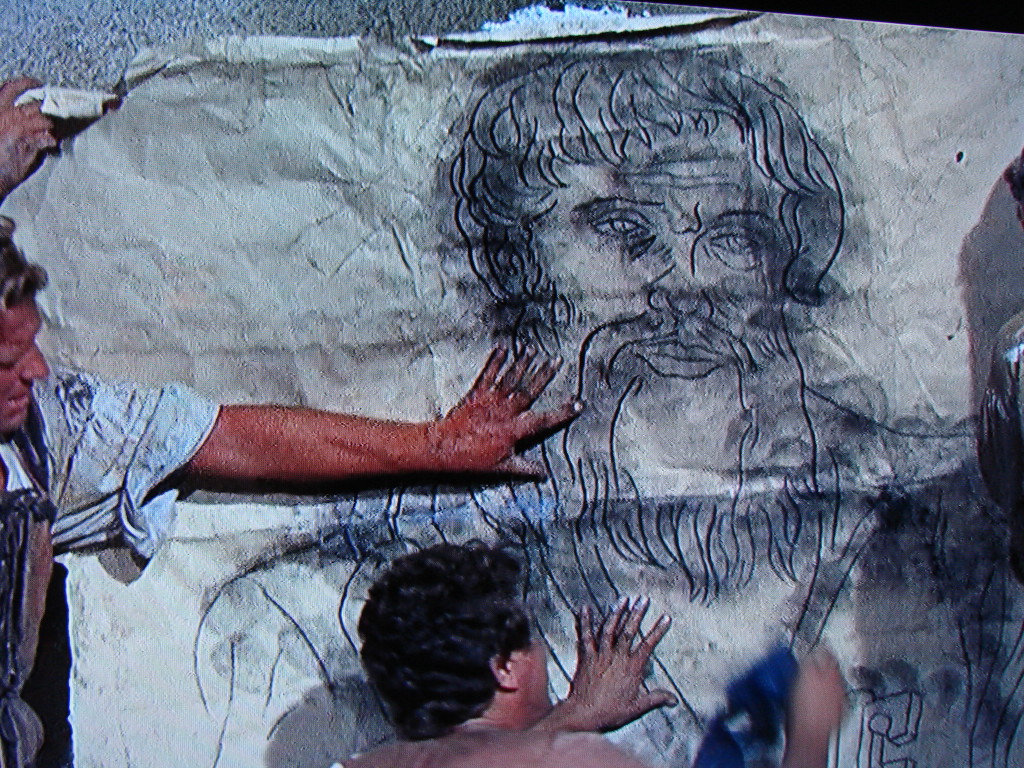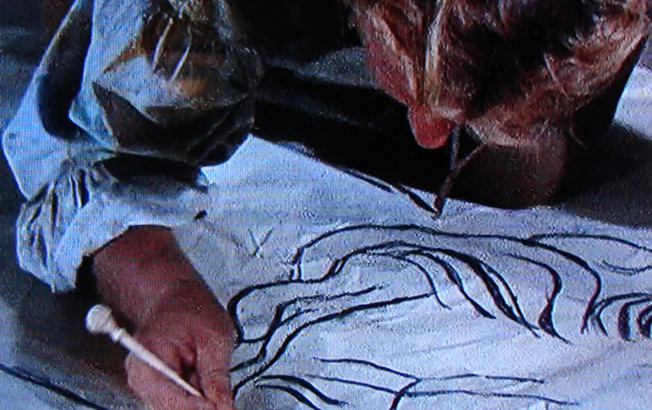Pouncing is an artist’s technique that was also used to create relief models. I was watching “The Agony and the Ecstasy” (1965, book by Irving Stone) and suddenly realized that they were showing “pouncing” that I described in my recent book.
In the movie (stills captured from TV below) you see Michelangelo and his crew tracing an image onto large thin sheets of vellum or paper, then pouncing (poking) holes into it along the drawing’s outline line. The basic image area on the wall was prepared with a white base layer. When the vellum was placed at scale onto the wall, a small bag filled with charcoal dust was tapped onto the line of holes thereby transferring the image outline onto the wall for filling in with final paints.
In relief models, modelers would scale up a geologic themed map to match the model size, and then poke holes along the geologic outlines of the map where the rock type changed. They would poke a certain number or code into the center of the geologic “color” to keep them all straight. The map was pounced with charcoal onto the plaster model and then colored in as a thematic data map. Fault lines, trails, or special notation were also poked into the map as codes or lines. Once the pounced map was taken away, the artist’s would fill in the colors, referring back to the geologic or themed map for certainty. There was no “undo” function in the 1880’s!
I write about this to show to that a historical technique from one domain (art) was adopted and adapted by another domain (science). The techniques we use now are based on what geologic modelers did then–which were based on what previous generations of artists at large scales did. It’s all connected.
Look at the last image in this blog post, where Michelangelo is connecting the dots with lines. If you think about modern data science and vector polygons, aren’t these just pounced dots connected by lines?

Artists would prepare a blank white area on the wall, much like a blank white plaster relief model base. Here the artist on the right is grinding the charcoal used for pouncing. Image still from “The Agony and the Ecstasy” (1965)

Pouncing (poking) holes with a sharp stylus on top of Michelangelo’s drawing so it could be marked with charcoal later. An artist’s mural technique also used in relief modeling. Image still from “The Agony and the Ecstasy” (1965)

Pouncing with the charcoal bag. An artist’s mural technique also used in relief modeling. Image still from “The Agony and the Ecstasy” (1965)

Pouncing with charcoal on top of Michelangelo’s drawing. An artist’s mural technique also used in relief modeling. Image still from “The Agony and the Ecstasy” (1965)

The pounced dots are clearly seen forming the outline of the drawing. A helper would connect the pounced dots on the Sistine Chapel wall and Michelangelo filled them in with finishing art. Pouncing was an artist’s mural technique also used in historic relief modeling. Image still from “The Agony and the Ecstasy” (1965)
